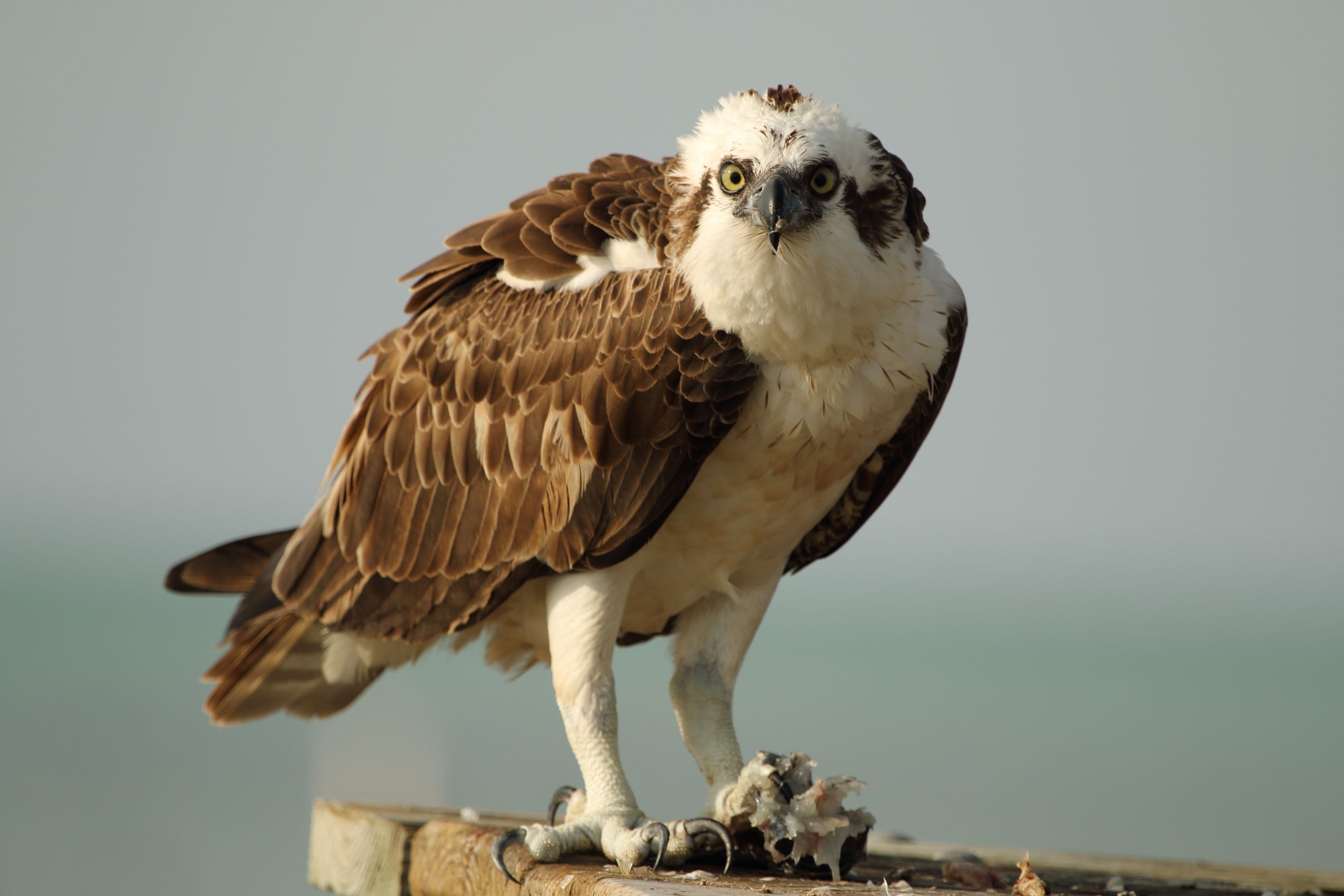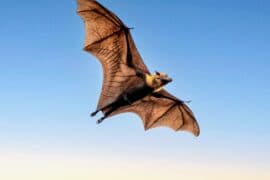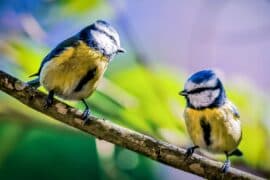Osprey
(Pandion haliaetus)

Description
Pandion haliaetus, commonly known as the osprey, is a large and powerful bird of prey that is found throughout much of the world. This majestic bird is often referred to as the "fish hawk," due to its unique ability to catch fish from the water's surface. In this article, we will explore the various characteristics and behaviors of the osprey, as well as its habitat, diet, and conservation status. Taxonomy The osprey belongs to the family Pandionidae, which consists of only one genus, Pandion, and one species, Pandion haliaetus. This species is divided into several subspecies based on geographic location, including the North American osprey (P. h. carolinensis), the Caribbean osprey (P. h. ridgwayi), and the Eurasian osprey (P. h. haliaetus), among others. Physical Characteristics The osprey has several distinctive physical characteristics that make it easily recognizable. It is a large bird, with a wingspan that can reach up to 6 feet (1.8 meters) in length. It has a white head and underparts, with dark brown wings and back. Its bill is hooked and its feet are equipped with sharp talons that are used for catching and holding onto prey. Ospreys are sexually dimorphic, with females typically larger than males. Females can weigh up to 4.6 pounds (2.1 kilograms) and have a wingspan of up to 6.6 feet (2 meters), while males typically weigh around 3.1 pounds (1.4 kilograms) and have a wingspan of up to 5.6 feet (1.7 meters). The osprey also has several adaptations that allow it to thrive in its aquatic habitat. Its nostrils are located on the sides of its beak, which helps to prevent water from entering its respiratory system while diving. Its feet have a rough texture that helps it grip onto fish, and its reversible outer toe can pivot forward or backward, allowing it to hold onto prey with two toes in front and two toes in back. Overall, the osprey is a highly specialized and well-adapted bird of prey. Behavior and Habitat The osprey is a highly skilled hunter that spends much of its time near bodies of water, including rivers, lakes, and oceans. It is known for its unique ability to dive into the water from high above, using its keen eyesight to locate fish below the surface. The osprey can adjust the angle of its dive to make sure it enters the water feet-first, minimizing the impact of the dive and allowing it to easily swim back to the surface with its catch. Ospreys are also known for their impressive nests, which are often constructed near the water's edge. These nests can reach up to 5 feet (1.5 meters) in diameter and can be as deep as 3 feet (0.9 meters). They are constructed of sticks, moss, and other materials, and are typically located in a tall tree or on a man-made structure such as a telephone pole or a platform specifically designed for osprey nesting. Diet The osprey is a fish-eating bird of prey and feeds primarily on live fish. Fish make up about 99% of its diet, although it may occasionally feed on other small prey such as rodents, small birds, or crustaceans. Ospreys are highly specialized hunters and have several adaptations that help them catch fish. They are able to hover in the air above the water before diving to catch their prey, and they are able to adjust the angle of their dive to make sure they enter the water feet-first. This allows them to minimize the impact of the dive and easily swim back to the surface with their catch. Ospreys typically hunt fish that are near the surface of the water, although they are able to dive up to three feet below the surface. They are known to feed on a variety of fish species, including herring, trout, salmon, and other types of fish that are found in their geographic range. The size of the fish that they catch depends on the size of the individual bird and the location where it is hunting. In general, ospreys prefer to catch fish that weigh between 5 and 16 ounces (150-500 grams), although they are capable of catching fish that weigh up to 4 pounds (1.8 kilograms) in some cases. Overall, the osprey's diet is specialized and well-suited to its aquatic habitat, allowing it to thrive in a variety of different environments around the world. Conservation Status The conservation status of the osprey bird varies depending on the geographic location and population. In some areas, the osprey populations have been stable or have increased, while in others they have experienced declines. In North America, the osprey population has been recovering since the 1970s, after being significantly impacted by pesticides such as DDT that caused eggshell thinning and reproductive failure. The ban on DDT and other conservation efforts have helped to increase osprey populations, and they are now considered to be of "Least Concern" by the International Union for Conservation of Nature (IUCN). In Europe, the osprey populations have also shown signs of recovery in recent years, although they are still considered to be of "Least Concern" by the IUCN. In some areas of Europe, osprey populations have been affected by habitat loss and disturbance, but conservation efforts such as the creation of protected areas and the implementation of conservation plans have helped to stabilize populations. In other parts of the world, such as Australia, the osprey populations are also considered to be of "Least Concern." However, in some areas of South America and Africa, ospreys have experienced declines due to habitat loss, disturbance, and hunting. In these areas, conservation efforts are needed to protect osprey populations and their habitat. Overall, the osprey is considered to be a species of least concern, but conservation efforts are still necessary to ensure the continued recovery and protection of their populations. Conclusion In conclusion, the osprey is a fascinating and powerful bird of prey that is known for its unique ability to catch fish from the water's surface. Its impressive hunting skills and impressive nests make it a favorite among birdwatchers and nature enthusiasts alike.
Taxonomic tree:







